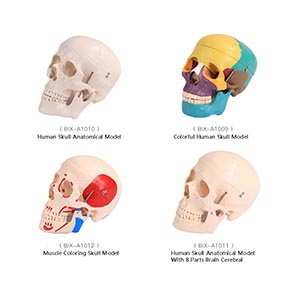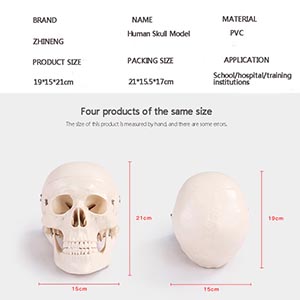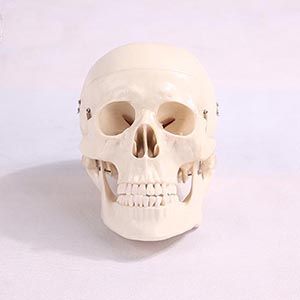With the increasing demand for medical education, the role of skull models in medical education has become increasingly important. It is not only the core tool of anatomy teaching, but also the basis of surgical training, disease diagnosis and other skills. In order to meet the growing demand, the design and application of skull models are also constantly improving. Here are some key points exploring whether skull models can meet the current needs of medical education.

1. The role of teaching models
Skull models are widely used in anatomy courses to help students understand the details of bone structure and different parts. Through 3D visual learning, students can master the shape, structure and function of bone more intuitively, thus enhancing their spatial cognitive ability. With the development of technology, modern skull models are often equipped with high-precision details and are able to simulate different pathological states, providing more realistic learning materials for medical education.
2. The perspective of industry experts
Many medical education experts believe that although skull modeling is a fundamental tool for learning anatomy, it is not a complete substitute for hands-on handling and case analysis in clinical practice. For example, while models can help students understand the basic structure of bones, they cannot represent real surgical procedures or complex physiological responses. Therefore, experts advocate the combination of skull models with virtual simulation technology, clinical practice and surgical training to comprehensively improve students' clinical skills.

3. Data support
Data shows that more and more medical schools are combining virtual reality (VR) and augmented reality (AR) technology with traditional skull models to teach anatomy. For example, VR technology is able to provide an immersive experience where students can explore various aspects of the skull in a virtual environment and even perform virtual surgery, which can effectively compensate for the limitations of traditional models. According to several medical education studies, schools that use these technologies have seen significant improvements in student learning outcomes.
4. Conclusion
Although the traditional skull model is still an important tool in medical education, its role is gradually being supplemented and expanded by virtual reality, augmented reality and other technologies. With the continuous innovation of medical education technology, future skull models may incorporate more intelligent functions, making them better suited to the growing needs of current and future medical education.

If you are interested in specific teaching models or technology applications, you can explore them further.

